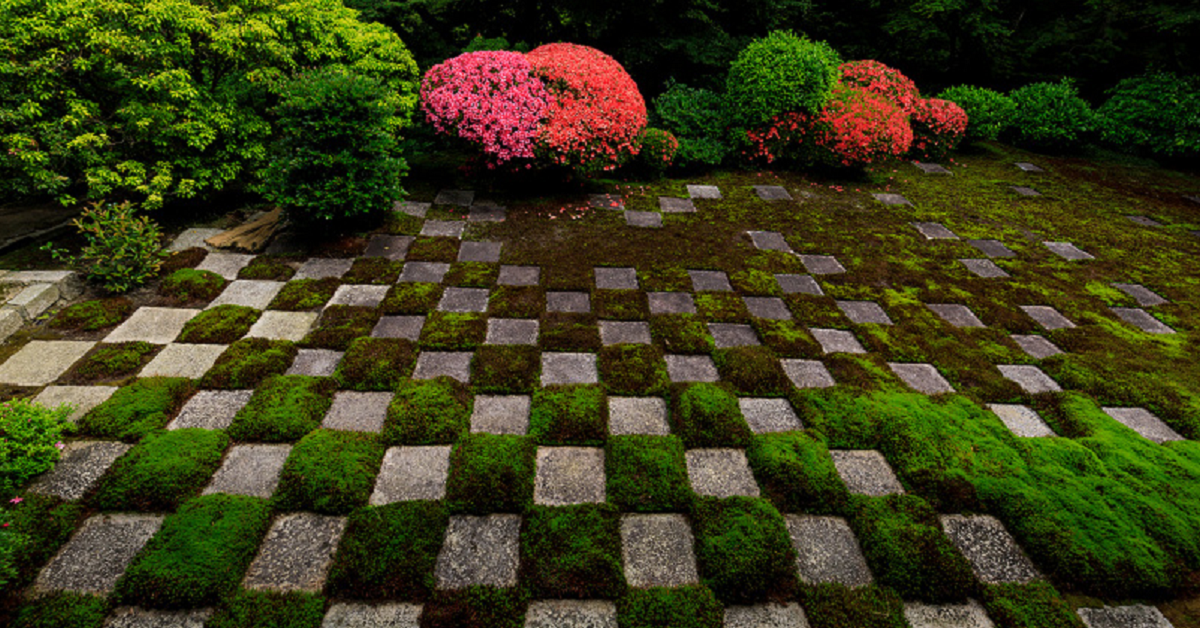Tofukuji Hojo Garden in Kyoto is recognized as a masterpiece of dry landscape design. Among its four gardens, the North Garden’s checkerboard pattern mirrors the haori worn by Tanjiro Kamado from Demon Slayer, making it a sacred site for fans. This unique blend of traditional aesthetics and modern pop culture leaves a lasting impression on every visitor.
What is Tofukuji Hojo Garden
Tofukuji is one of the main temples of the Rinzai sect of Zen Buddhism and is among Kyoto’s most prestigious temples. The Hojo Garden was designed in 1939, with four distinct gardens placed around the main hall, each embodying different Zen principles. Among them, the North Garden stands out for its checkerboard arrangement of stones and moss, visually representing Zen concepts of order and harmony.
The gardens are arranged as follows:
| Direction | Garden Features | Viewing Points |
|---|---|---|
| East | Stone formations in 7-5-3 arrangement | Symbolizes Zen numerology |
| South | White sand and minimal stones | Quintessential dry landscape |
| West | Rice field-style checkerboard | Balance and order |
| North | Checkerboard of moss and stone | Resembles Tanjiro’s haori |
Walking through all four sides allows visitors to experience multiple dimensions of Zen philosophy through landscape design.
Tanjiro’s Haori and the Checkerboard Pattern
In Demon Slayer, Tanjiro Kamado wears a haori with a green-and-black checkerboard pattern. Historically, this design is known as “Ichimatsu,” a pattern symbolizing prosperity and continuity. For Tanjiro, it represents his unyielding determination and his strength to protect his family.
A comparison between Tanjiro’s haori and the garden reveals the following:
| Item | Tanjiro’s Haori | Tofukuji Garden |
|---|---|---|
| Colors | Green and black | Green moss and white stones |
| Meaning | Strength, prosperity | Harmony, eternity |
| Impression | Powerful and disciplined | Serene and orderly |
This overlap makes the garden resonate deeply with fans, elevating it to the status of a sacred pilgrimage site.
Charm as a Photography Spot
Tofukuji’s garden transforms with the seasons, offering ever-changing visual beauty throughout the year. In autumn, the red foliage contrasts with the green moss, while in spring, fresh greenery creates a refreshing landscape.
| Season | Garden’s Expression | Photography Tips |
|---|---|---|
| Spring | Fresh greens blending with moss | Shoot diagonally for depth |
| Summer | Deep, lush green | Capture from above to highlight symmetry |
| Autumn | Contrast of red leaves and checkerboard | Frame to resemble Tanjiro’s haori |
| Winter | Snow highlights the pattern | Emphasize the white-green contrast |
This dynamic scenery attracts not only traditional garden lovers but also anime fans seeking photogenic moments, many of which are shared widely on social media.
Symbolism of the Checkerboard Pattern
The checkerboard (Ichimatsu) pattern symbolizes eternity, prosperity, and good fortune. In the garden, it embodies Zen values of balance and order, while in Tanjiro’s case, it reflects his perseverance and resilience.
The motif’s universality explains why it remains popular in modern fashion, architecture, and design. By standing within the garden, visitors sense how Japanese tradition carries a universal aesthetic that transcends time and culture.
Visiting Guide to Tofukuji
For those who wish to fully enjoy the “sacred site” experience, visiting in person is highly recommended. Tofukuji is conveniently located just minutes by train from Kyoto Station and is also famous as a prime autumn foliage spot.
| Category | Details |
|---|---|
| Location | Honmachi 15-chome, Higashiyama, Kyoto |
| Admission | Hojo Garden 500 yen |
| Opening Hours | 9:00–16:00 (varies by season) |
| Access | 10 min walk from JR Tofukuji Station |
Nearby attractions include Fushimi Inari Taisha and Sanjusangendo, allowing visitors to combine anime pilgrimage with Kyoto’s deep historical and cultural sites.
Conclusion
The checkerboard design of Tofukuji Hojo Garden is more than a mere pattern. It represents centuries of Japanese tradition while also finding new meaning through Demon Slayer. The fusion of Tanjiro’s haori design with Zen garden aesthetics has created a unique cultural bridge, drawing in anime fans and traditional tourists alike.
For fans, the garden becomes a symbolic stage connecting the spirit of Tanjiro with Japanese heritage, while for others, it remains a space of calm and harmony. The coexistence of tradition and pop culture ensures that Tofukuji Hojo Garden will remain a highlight of Kyoto tourism for generations to come.






